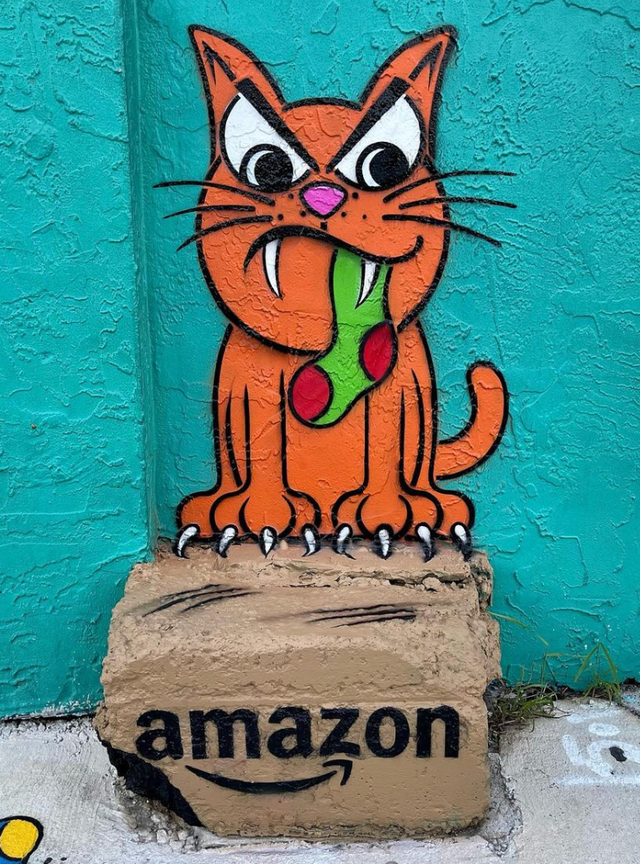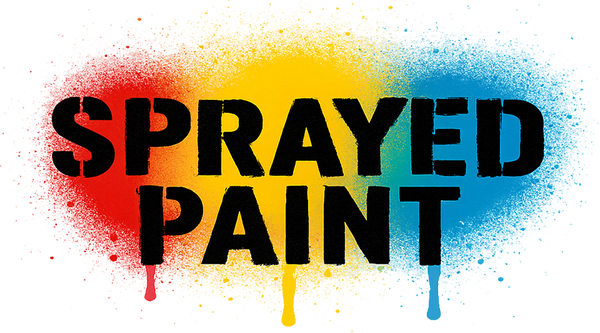
Graffiti artist Tom Bob, whose real name remains a closely guarded secret, has gained widespread recognition for his playful and imaginative street art, which often incorporates elements of the urban environment into his designs. Born in the United States, Tom Bob has been active as an artist since the late 2000s, garnering international attention for his creative pieces that cleverly interact with the surrounding landscape. His art has been spotted in various cities across the United States and beyond, with fans eagerly sharing images of his latest works on social media platforms. While graffiti has traditionally been associated with subversive, anti-establishment messages, Tom Bob's artwork primarily focuses on whimsy and fun, bringing a touch of humor to the otherwise drab urban landscapes. His pieces often utilize overlooked elements of the cityscape, such as pipes, grates, or electrical boxes, and transform them into delightful and unexpected creations. This unique approach to street art, which involves combining urban infrastructure with his imaginative vision, sets Tom Bob apart from other graffiti artists, as his work is inherently site-specific and context-dependent. Tom Bob's style is characterized by the use of bright, bold colors and cartoonish characters, which are designed to evoke a sense of joy and wonder in the viewer. His creations often have a nostalgic quality, drawing inspiration from childhood memories and popular culture, with characters like Pac-Man and the Teenage Mutant Ninja Turtles making frequent appearances in his work. Additionally, Tom Bob's art often contains an element of surprise, as he takes everyday objects and incorporates them into his designs in unexpected ways, thereby encouraging viewers to see the familiar in a new light. Although Tom Bob's art has been met with widespread acclaim and appreciation, his work is not without its share of controversy. Due to the nature of graffiti as a form of expression, many critics argue that his work constitutes vandalism and can negatively impact the visual aesthetics of public spaces. However, others contend that Tom Bob's playful and non-destructive approach to street art distinguishes him from more aggressive or damaging forms of graffiti, and that his work serves to enhance and enliven the urban environment. Despite the debate surrounding the legitimacy of his work, Tom Bob has managed to create a significant following on social media platforms, where fans eagerly share images of his latest creations. His popularity has grown to the point that some city officials have even commissioned him to create public art installations, recognizing the value of his innovative and engaging approach to street art. In this sense, Tom Bob's work serves as a bridge between the traditionally underground world of graffiti and the mainstream art world, as it demonstrates the potential for street art to be recognized and celebrated as a legitimate form of creative expression. Tom Bob's influence extends beyond his own artwork, as he has inspired a new generation of street artists to adopt a more playful and imaginative approach to their craft. His work has encouraged these artists to consider the possibilities of incorporating existing urban elements into their designs, thereby challenging the boundaries of what constitutes graffiti art. In this way, Tom Bob has played a significant role in shaping the contemporary street art scene, pushing the limits of the medium and redefining public perceptions of graffiti. Despite the controversial nature of graffiti, Tom Bob has been able to establish himself as a respected artist within the art world, attracting attention from collectors and gallery owners alike. His work has been featured in various exhibitions and has even been purchased by high-profile art collectors, demonstrating the increasing acceptance of street art within the contemporary art market. As a result of his success, Tom Bob has helped to legitimize graffiti as an art form, breaking down the barriers that have traditionally separated street art from the mainstream art world.
